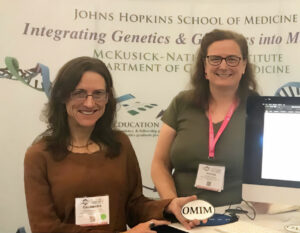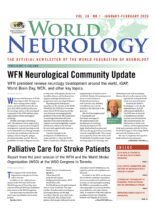Join the collective network of neurologists, neuroscientists, and allied specialty professionals to create a research environment that tackled problems of global neurology.

Orla Hilton
By Dr. Orla Hilton
Founded in 2020, the Global Neuro Research Coalition works to advance research in global brain health and improve patient care through an ever-expanding international network of clinicians, allied health care workers, scientists, and policymakers who are passionate about brain health.
COVID-19 was the initial catalyst for the founding of the then-called Global COVID-19 Neuro Research Coalition, as the global neurological community began to be confronted with the largely unknown effects of SARS-CoV-2 on the nervous system and the inequalities in the management of patients who developed neurological complications of the virus. We have now expanded our focus and established as the Global Neuro Research Coalition, comprising over 120 members from 38 countries, with skills and translational expertise spanning from basic neuroscience research to clinical neurology and guidelines/policy decision-making.
Our coalition invites and welcomes new members of the global neurological community to join our collective network of neurologists, neuroscientists, and allied specialty professionals to create an inclusive research environment that can better understand and tackle the ever-evolving problems the field of global neurology faces.
Our mission statement: Advancing brain health research through interdisciplinary global collaboration.
 The five pillars of the World Health Organization’s (WHO) Intersectoral Global Action Plan (IGAP) on Epilepsy and Other Neurological Disorders lie at the heart of our mission, as we work to harmonize networks and strategies for future neurological research and to develop clinical guidance by establishing open lines of communication between international colleagues and institutions, especially in low- and middle-income countries (LMICs).
The five pillars of the World Health Organization’s (WHO) Intersectoral Global Action Plan (IGAP) on Epilepsy and Other Neurological Disorders lie at the heart of our mission, as we work to harmonize networks and strategies for future neurological research and to develop clinical guidance by establishing open lines of communication between international colleagues and institutions, especially in low- and middle-income countries (LMICs).
The building and strengthening of such a coalition remain vital as we investigate and understand the long-term neurological and cognitive sequelae of COVID-19, and look forward to pursuing the translation of current and future neurological research into policies that promote a ‘one health’ approach.
To date, the coalition has published over 10 papers together. A key example of the power of our consortium to perform global neurological research is the International Inter-observer Variability Study by Tamborska et al. (Journal of the Neurological Sciences, 2023), undertaken in collaboration with the World Federation of Neurology. This brought together 146 researchers and clinicians from 45 countries, who looked at the diagnostic accuracy for the acute neurological complications of COVID-19 and demonstrated the need for training in the global reporting of neurological syndromes. Other key works of our coalition have addressed the neurological manifestations of acute COVID-19 infections. Examples include the Consensus Clinical Guidance for Diagnosis and Management of Adult COVID-19 Encephalopathy Patients’ by Michael et al. (The Journal of Neuropsychiatry and Clinical Neurosciences, 2023), in addition Neurological Events Reported after COVID-19 Vaccines by Frontera et al. (Annals of Neurology, 2022), and Evaluation and Treatment Approaches for Neurological Post-Acute Sequelae of COVID-19 by Frontera et al. (Journal of the Neurological Sciences, 2023).
In addition, our coalition has also led to the creation of the Global Brain Health Clinical Exchange Platform in collaboration with the WHO. This platform hosts monthly free, online sessions, engaging hundreds of participants from over 50 countries to hear the latest from world leaders in neurology and exchange experience on the current challenges and future directions of a wide spectrum of neurological research. Topics have included the neuroepidemiology of emerging pathogens, management of acute neurological presentations, patient-and-public engagement and long-term care, and the delivery of improvements in health care systems.
The coalition is grateful for the ongoing support of the World Federation of Neurology and our other partner institutions. We endeavor to continue to collaborate and partner in an interdisciplinary way with other medical and allied specialties, especially in LMICs which often carry the heaviest burden of neurological disease. We welcome all new members. If you are interested in becoming part of the coalition, please visit https://www.liverpool.ac.uk/neurosciences-research-unit/knowledge-exchange/global-neuro-research-coalition/ and/or send an email to covidcns@liverpool.ac.uk. •
Dr. Orla Hilton (UK) is an academic foundation doctor in infectious diseases and clinical researcher for the national COVID-19 Clinical Neuroscience Study based at Infection Neuroscience Lab in Liverpool, UK.
 I
I
